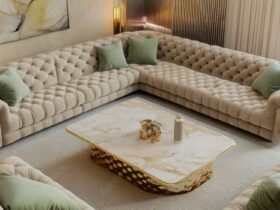Damascus knives are highly regarded in both professional kitchens and among knife enthusiasts, but what sets them apart from other knives is their unique blend of functionality and aesthetic beauty. These knives not only perform at an exceptional level but also serve as pieces of art. For enthusiasts, the fusion of form and function in knives for sale offers a perfect balance that makes them invaluable tools and collectible items. In this article, we will explore how Damascus knives combine functionality and beauty, making them a must-have for both chefs and collectors alike.
Making Damascus Knives
The creation of a Damascus knife is a true art form. The process involves folding layers of different types of steel together to create the blade. These layers are heated and hammered into shape, a technique that dates back thousands of years. The result is a blade with unique patterns that are not only visually striking but also provide significant functional benefits. The craftsmanship involved in creating a damascus knives requires skill and precision. The layers of steel create a combination of hard and soft metals, which contributes to the blade’s strength and sharpness. The layers also form beautiful, intricate patterns on the surface of the blade. These patterns are one of the most defining features of Damascus knives, and no two knives are exactly alike.
Superior Functionality for Daily Use
While the beauty of Damascus knives is undeniable, their functionality is equally impressive. The layering process used in crafting Damascus knives creates a blade that is both sharp and durable. The multiple layers of steel make the blade extremely strong, allowing it to withstand repeated use without becoming dull or damaged. This durability is essential for both professional chefs and home cooks who rely on their knives for precise cutting and chopping tasks. The sharpness of Damascus knives is another key feature that contributes to their functionality. The combination of hard and soft steels results in an edge that stays sharp for longer periods than many other types of knives. This sharpness allows for precision cutting, which is crucial in both professional and home kitchens.
Ergonomic Design for Comfort and Control
Damascus knives are designed not only for performance but also for comfort and control. The full tang design, which means the blade extends through the entire length of the handle, provides balance and stability while cutting. This balance allows for better control, which is especially important when performing delicate tasks that require precision. The handle of a Damascus knife is typically ergonomically designed, providing a comfortable grip that reduces hand fatigue during long periods of use. Many Damascus knives have handles made from high-quality materials such as wood, bone, or synthetic composites, which add to both their functionality and aesthetic appeal. The combination of a well-balanced blade and a comfortable handle ensures that Damascus knives are easy to control, making them ideal for both professional chefs and enthusiasts who enjoy cooking or collecting knives.
Aesthetic Beauty of the Blade
One of the most distinctive features of Damascus knives is the intricate pattern that appears on the surface of the blade. This pattern is a result of the folding process used to create the blade. As the layers of steel are heated and folded, the metals react in different ways, creating unique designs that can resemble waves, swirls, or other natural patterns. These patterns not only enhance the visual appeal of the knife but also serve as a testament to the craftsmanship involved in its creation. For knife enthusiasts and collectors, the beauty of a Damascus knife is just as important as its functionality. The unique patterns on each blade make every Damascus knife a one-of-a-kind item. The visual appeal of these knives often makes them display pieces in addition to functional tools.
Damascus Knives as Collectible Art
For many knife enthusiasts, collecting Damascus knives is not just about owning a tool, but about acquiring a piece of art. The stunning patterns on the blades make these knives desirable for display as much as for use in the kitchen. Collectors often seek out Damascus knives for their historical significance, craftsmanship, and aesthetic value. A well-made Damascus knife can increase in value over time, especially if it is crafted by a renowned blacksmith or maker. Beyond their functional use, Damascus knives are often passed down through generations as heirlooms. This adds to their allure as collectible items, as they carry with them a sense of history and tradition.
Versatility in the Kitchen and Beyond
Damascus knives are not only beautiful and collectible but also highly versatile in the kitchen. Their ability to perform a wide range of tasks makes them ideal for both professional chefs and home cooks. Whether it’s chopping, slicing, mincing, or dicing, a Damascus knife can handle it all with ease. The sharpness and durability of the blade make it perfect for both delicate tasks like preparing sushi and heavier tasks like breaking down large cuts of meat. The versatility of Damascus knives extends beyond the kitchen as well. Many collectors use Damascus knives as part of their outdoor or camping gear, appreciating the strength and reliability that these knives offer. The ability to use a Damascus knife for both culinary and outdoor activities makes it a practical tool that also serves as a status symbol in the world of knife collecting.







Leave a Reply